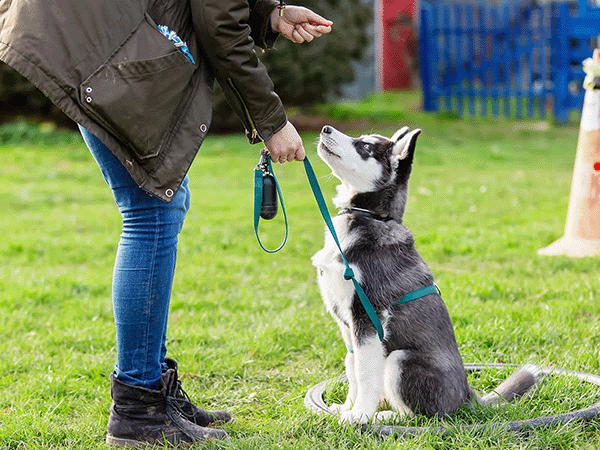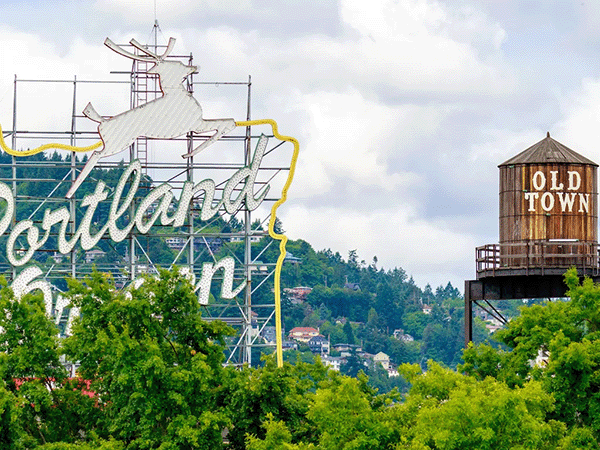Southwest Airlines Dog Policy: Everything You Need to Know in 2026

For many pet parents, leaving their furry companions behind when traveling simply isn't an option. Whether you're relocating, vacationing, or visiting family, Southwest Airlines offers a straightforward pet policy that can make traveling with your four-legged friend less stressful. Based on our comprehensive research at Sniffspot, we've compiled everything you need to know about the Southwest Airlines dog policy.
Not sure if Southwest is right for your dog? Consider our full dog airline policy breakdown.
Southwest Airlines Dog Policy Overview
Southwest Airlines welcomes small cats and dogs in the cabin on domestic flights, though there are some important restrictions and requirements you should be aware of before booking.
- How Does Southwest's Dog Policy Compare?
- Quick Facts About Southwest's Dog Policy:
- Service Dogs on Southwest Airlines
- Navigating Southwest's Open Seating with Dogs
- Southwest Airlines Pet Carrier Requirements
- Southwest Airlines Pet Reservation Process
- Important Restrictions to Remember
- How Difficult Is It to Travel with Dogs?
- Tips for Flying with Your Dog on Southwest
- Frequently Asked Questions: Southwest Airlines Dog Policy
- Final Thoughts: Flying with Your Dog on Southwest
How Does Southwest's Dog Policy Compare?
Based on our 2024 Sniffspot travel survey of dog owners, Southwest Airlines emerged as the second most popular airline for pet travel, with 3.6% of respondents choosing it as their preferred carrier.
Travelers appreciate Southwest's straightforward approach, with one respondent noting, "Southwest offers easy seating when traveling with my dog." Another mentioned they chose Southwest because it was "friendly and America's most reliable for pet travel." The airline's simplified boarding process seems particularly appealing to those traveling with pets.
Below, see how Southwest Airline's fees and pet limits compare to other popular airlines.
 Source: Airline Policy Websites
Source: Airline Policy Websites
Quick Facts About Southwest's Dog Policy:
- Pet Fee: $95 each way
- Allowed Pets: Small, vaccinated cats and dogs only
- Carrier Size: Maximum dimensions 17" L x 10" W x 9.5" H
- Cabin Limit: 6 pet carriers per flight
- Restrictions: No pets on international flights or flights to/from Hawaii
Review Southwest Airline's pet policy on their website.
Service Dogs on Southwest Airlines
 Source: Southwest Airlines service dog policy
Source: Southwest Airlines service dog policy
Southwest Airlines has specific policies for service animals that differ from those for pet dogs. As required by Department of Transportation regulations, Southwest accommodates trained service dogs for passengers with disabilities.
- No Fee Required: Unlike pet dogs, properly trained service dogs fly free on Southwest.
- No Carrier Required: Service dogs can sit at their handler's feet or in their lap (if small enough) and aren't required to remain in a carrier.
- Size Restrictions Don't Apply: Southwest accommodates service dogs regardless of breed or size.
- Documentation Requirements: Southwest may request: DOT Service Animal Air Transportation Form (must be submitted 48 hours before travel), or confirmation that the dog is trained for specific tasks related to the handler's disability
One survey respondent with a service dog noted: "I chose Southwest because it's easy to board with my service dog. Their staff is well-trained in accommodating service animals and they never questioned the legitimacy of my service dog like I've experienced on other airlines."
It's important to understand that since 2021, emotional support animals are no longer recognized as service animals under Department of Transportation rules. On Southwest, emotional support animals now fall under the standard pet policy, including size restrictions and fees.
"Southwest makes the distinction between service dogs and emotional support animals very clear on their website, which I appreciate," shared another survey participant. "The process for bringing my service dog was straightforward and dignified."
Navigating Southwest's Open Seating with Dogs
Southwest's unique open seating policy (no assigned seats) requires special consideration when traveling with a dog. Here's how to make it work for you:
Before You Board
- Check Your Boarding Position: Consider purchasing Early Bird Check-In or upgrading to Business Select for a better boarding position, giving you more seating options.
- Request Pre-Boarding if Needed: If you have a service dog that requires additional space, you may qualify for pre-boarding. Speak with the gate agent about your needs. "As someone with a service dog, Southwest's gate agents have always been accommodating in letting me pre-board to find appropriate seating for my dog," shared one survey respondent.
Choosing the Right Seat
- Window Seat Advantage: A window seat often provides more floor space for your pet carrier and minimizes disruptions from other passengers needing to get up. "I always aim for a window seat when flying Southwest with my dog. It gives us a bit more space and prevents people from stepping over the carrier," recommended a frequent Southwest flyer from our survey.
- Middle Seat Considerations: If you can't get a window seat, the middle seat allows your carrier to extend slightly under both adjacent seats.
- Avoid Bulkhead Rows: These seats have no under-seat storage, making them unsuitable for pet carriers.
- Exit Row Restrictions: Passengers with pets (including service dogs) cannot sit in exit rows due to safety regulations.
Communicating with Fellow Passengers
- Be Upfront: Let the passengers seated next to you know you're traveling with a dog, especially if you have a service animal that will be at your feet.
- Offer to Switch: If someone next to you expresses discomfort or allergies, be prepared to find another seat or ask a flight attendant for assistance. One survey respondent shared: "Southwest's open seating initially worried me when traveling with my dog, but I've found that being friendly and communicative with nearby passengers has always resulted in positive experiences."
- Mind Your Space: Ensure your pet carrier doesn't extend into another passenger's foot space.
Southwest Staff Assistance
Don't hesitate to ask Southwest staff for help navigating the open seating process with your dog. Flight attendants can often assist in finding appropriate seating or mediating any concerns.
"What I appreciate about Southwest is that their flight attendants are genuinely helpful when I'm trying to get settled with my dog," noted a survey participant. "They understand the challenges of their open seating policy when traveling with pets and actively help make it work."
By planning ahead and using these strategies, you can successfully navigate Southwest's open seating policy while keeping both your dog and fellow passengers comfortable throughout the flight.
Southwest Airlines Pet Carrier Requirements
 Southwest's branded pet carrier
Southwest's branded pet carrier
Your pet carrier counts as either a personal item or a carry-on item, meaning you can board with either:
- A pet carrier and a personal item, OR
- A pet carrier and a regular-sized carry-on bag
The airline requires that:
- The carrier must be specifically designed as a pet carrier (soft or hard-sided)
- It must be leak-proof and well-ventilated
- Your pet must be completely inside the carrier and able to stand up and move around easily
- The carrier must fit under the seat in front of you
Southwest offers their own branded pet carrier (dimensions: 17" L x 10" W x 9.5" H), though you can use other carriers with maximum dimensions of 18.5" L x 13.5" W x 9.5" H.
Southwest Airlines Pet Reservation Process
Space for pets is limited on Southwest flights, so it's advisable to make a reservation in advance. According to the airline, you should:
- Book your own ticket first
- Call Southwest to add your pet to your reservation
- Pay the pet fare at the airport ticket counter upon check-in ($95 one-way)
The pet fare is refundable if you cancel your reservation.
Important Restrictions to Remember
When planning to fly with your dog on Southwest, keep these restrictions in mind:
- Hawaii Travel: Pets are not allowed on flights to/from Hawaii, though they are accepted on flights between Hawaiian islands
- International Travel: Pets are not allowed on international flights or any itinerary that includes an international flight
- Puerto Rico Travel: Specific requirements may apply for travelers to Puerto Rico
- Pet Limits: One pet carrier per ticketed passenger, with a maximum of two animals of the same species per carrier
- Age Requirement: Pets must be at least 8 weeks old to travel
- Unaccompanied Minors: Cannot travel with a pet
How Difficult Is It to Travel with Dogs?
Our 2024 Sniffspot survey revealed some interesting insights about traveling with dogs:
According to our Sniffspot research with real dog owners, 82% of respondents had no airline preference when traveling with dogs, suggesting that many pet parents either don't fly frequently with their dogs or find the experience similar across carriers.
Additionally, the survey showed that traveling with dogs presents challenges:
According to our 2024 Sniffspot research, 88% of respondents found traveling with dogs either "somewhat more difficult" (48%) or "much more difficult" (40%) than traveling without pets.
Tips for Flying with Your Dog on Southwest
Based on feedback from Southwest passengers and our 2024 Sniffspot survey results, here are comprehensive tips to make your journey smoother:
Before Booking
- Secure your reservation early: With only 6 pet spaces per flight, call Southwest to add your pet to your reservation immediately after booking your own ticket.
- Consider flight timing: Book direct flights when possible and avoid peak travel times to minimize stress for both you and your pet. "Southwest offers easy seating when traveling with my dog, which makes the whole experience much less stressful," shared one survey respondent.
- Check destination requirements: If traveling to Puerto Rico or between Hawaiian islands, verify any additional documentation or health certificate requirements well in advance.
Preparing Your Pet
- Carrier training is essential: Get your dog comfortable with their carrier weeks before your flight by creating positive associations through treats and short practice sessions. "I brought my dog's favorite blanket and toys in the carrier during our Southwest flight. That familiarity really helped keep him calm," noted a frequent Southwest flyer from our survey.
- Exercise before flight: A tired dog is typically a calmer traveler. One survey respondent recommended: "I always take my dog for a long walk or to a dog park before heading to the airport when flying Southwest. It makes a huge difference in their behavior during the flight."
- Consider a vet visit: Discuss travel anxiety with your veterinarian if your dog shows signs of stress. Some dogs benefit from natural calming supplements or prescribed medications for air travel.
- Identification is critical: Ensure your dog wears ID tags with your current contact information, and consider a microchip as additional protection.
Airport Day Strategies
- Arrive with plenty of time: Allow at least an extra 30-45 minutes beyond your normal airport arrival time to check in and pay the pet fare at the counter.
- Limit food and water: Feed your dog a light meal 4-6 hours before the flight and offer small amounts of water to prevent accidents. One Southwest traveler in our survey shared: "I always make sure my dog has a small meal early in the day before our flight, then just offer ice cubes for hydration at the airport. This has prevented any accidents in the carrier during our Southwest flights."
- Pre-flight potty break: Use pet relief areas at the airport immediately before boarding. Many airports now have designated pet relief areas past security.
- Keep documentation handy: Bring vaccination records and health certificates in your carry-on, even for domestic flights where they aren't required.
During the Flight
- Placement matters: Try to position the carrier so your dog can see you during the flight. This maintains a reassuring connection.
- Stay calm yourself: Dogs are sensitive to their owners' emotions. Maintaining a calm demeanor helps keep your dog relaxed. "My dog picks up on my energy, so I make sure to stay relaxed while flying Southwest. When I'm calm, she's calm," explained a survey respondent who regularly travels with her small dog.
- Discreet comfort: While the carrier must remain closed and under the seat, you can quietly slip your fingers through air holes to provide reassurance during turbulence.
- Be respectful of others: Remember that not all passengers are comfortable around animals. Keeping your dog quiet and contained helps ensure everyone has a pleasant flight.
After Landing
- Immediate relief: Head straight to a pet relief area upon landing to allow your dog to stretch and relieve themselves.
- Decompression time: Allow your dog ample time to decompress after the flight before engaging in strenuous activities. "After flying Southwest with my dog, I always find a quiet spot away from the airport chaos where he can chill out for a bit before we continue to our final destination," advised a Southwest pet traveler from our survey.
- Reward good behavior: Positive reinforcement after a successful flight helps establish flying as a positive experience for future travel.
Frequently Asked Questions: Southwest Airlines Dog Policy
How much does it cost to bring a dog on Southwest Airlines?
Southwest charges $95 one-way for each pet carrier. This fee must be paid at the airport ticket counter upon check-in. The fee is refundable if you cancel your reservation.
Can large dogs fly in cabin on Southwest?
No, Southwest only allows small dogs that can fit in a carrier under the seat in front of you. The combined weight of your pet and carrier cannot exceed what you can safely place under the seat.
Does Southwest airlines allow dogs in cargo?
No, Southwest does not offer pet cargo services. They only allow small cats and dogs in the cabin. If your pet is too large for cabin travel, you'll need to consider another airline.
How many dogs can I bring on Southwest?
Each passenger can bring one pet carrier. Each carrier can contain up to two dogs of the same species, provided they both fit comfortably in the single carrier.
Do I need to make a reservation for my dog?
Southwest airlines doesn't require you to make a reservation for your dog. However, it's a good idea to do so since they limit the total number of pets allowed in cabin. To add your dog to your reservation, call the airline after purchasing your ticket.
Final Thoughts: Flying with Your Dog on Southwest
Southwest Airlines offers a relatively straightforward approach to traveling with small dogs, though restrictions do apply. With proper planning and preparation, their pet policy can make bringing your furry friend along on your journey less stressful.
Remember that requirements may change, so always verify the most current information directly with Southwest Airlines before booking. Safe travels to you and your four-legged companion!
Additional dog airline resources:
- Guide to Airline Dog Policies
- Which Airlines Allow Dogs in Cabin?
- American Airlines Dog Policy
- United Airlines Dog Policy
- Guide to Flying with a Large Dog
Looking for a place to help your dog decompress after a long flight? Check out Sniffspot to find private, safe spaces where your dog can stretch their legs and enjoy some off-leash time after being cooped up in a carrier.
Most recent articles
Related articles
Top dog guides per area
Dog training guides

Dog Food Aggression: Why You Shouldn't Punish It
Does your dog ever growl when you walk by their food dish? Maybe they get possessive of treats, carrying them far away and giving you side-eye when you start to approach — or snarling at your other pets or children if they get too close.

Best Dog Fields in the US: 25+ Wide-Open Spaces for Your Pup to Run Free
The best dog fields in the US offer something that traditional enclosed parks simply can't match: acres of open space where your pup can truly stretch their legs and run at full speed. From Colorado's 470-acre prairie meadows to Tennessee's award-winning "Outback," these wide-open spaces allow dogs to roam, explore, and exercise naturally while engaging instincts that cramped urban parks suppress.

The Ultimate Guide to Scent Training for Dogs
Your dog's nose is an amazing tool. Did you know they have 40 times the olfactory receptors than humans? Scent training for dogs taps into this superpower, turning everyday moments into exciting sniff-fests. It's enriching for all types of dogs – reactive, shy, or simply adventurous. Ready to explore the world of scent work for dogs? Let's get started.

Service Dog Training Costs: DIY vs. Pro
More than 80 million Americans rely on their service dogs to help them navigate the world. Task-trained assistance animals perform a huge range of life-changing—in many cases, life-saving—services: These dogs act as eyes for visually impaired handlers, provide mobility support, alert to seizures and blood sugar crashes, interrupt anxiety attacks, remind their people to take medications, and so much more.

How to Deal With Puppy Potty Training Regression
You thought those dreaded middle-of-the-night potty breaks were over. You were finally free from cleaning up puppy puddles. Then, suddenly, your furry friend starts having accidents again. It's frustrating, right? This puppy potty training regression is more common than you think. Don't worry; we'll help you get your pup back on track. We'll cover the common causes, offer practical solutions, and give you actionable steps to tackle this challenge together.

Dirty Dog Syndrome: Causes, Solutions, and Prevention
It's a cringe-worthy moment every dog owner dreads: your furry friend chowing down on something truly disgusting. If your dog has a penchant for poop, you're dealing with coprophagia. It's more common than you think, and thankfully, often manageable. This article explores the reasons behind dirty dog syndrome, from instinct to learned behavior. We'll also give you practical tips to help break this unpleasant habit.

How to Train Your Rescue Dog: A Complete Guide
* All Sniffspot articles are reviewed by certified trainers for quality, please see bottom of article for details *
Dog enrichment guides

Best Dog Water Parks in the US: 15+ Amazing Splash Destinations for Your Pup
Do you have a water-loving dog looking to burn some energy? There are countless dog parks to visit throughout our country — but some of them become far too hot in the midday sun to be safe for your pets to play. That’s why we’ve put together a list of some of the best dog water parks throughout the United States! At these locations, your pup can frolic, splash, and swim to their heart’s content.

Best Dog Fields in the US: 25+ Wide-Open Spaces for Your Pup to Run Free
The best dog fields in the US offer something that traditional enclosed parks simply can't match: acres of open space where your pup can truly stretch their legs and run at full speed. From Colorado's 470-acre prairie meadows to Tennessee's award-winning "Outback," these wide-open spaces allow dogs to roam, explore, and exercise naturally while engaging instincts that cramped urban parks suppress.

Best Toys for Herding Dogs: Keeping Your Pup Happy & Engaged
Herding dogs are amazing, intelligent companions. But that also means they need more than just a simple game of fetch. Finding the right toys for herding dogs is key to keeping them happy and stimulated. This article explores some of the best toys for herding dogs, including options specifically for breeds like Border Collies and Australian Shepherds. We'll help you discover the perfect herding toys for dogs to tap into their natural instincts and keep them entertained for hours.

Tough Dog Toys for Aggressive Chewers: A Practical Guide
Does your dog destroy every toy you give them? Is your house littered with the remnants of plush toys? Are you tired of wasting money on "indestructible" dog toys for aggressive chewers that don't last? Then this post is for you. We'll cover everything you need to know about finding the best dog toys for aggressive chewers, so you can finally give your pup something safe, durable, and fun.

Daily Exercise Calculator: How Much Exercise Does Your Dog Need?
Everyone knows dogs need exercise, but how much is enough? Walks are great, but creating a truly balanced fitness plan means understanding your dog's specific needs. This post helps you develop a daily exercise calculator for your dog, considering breed, age, and lifestyle. We'll cover fun activities, understanding exercise intensity, and recognizing when your pup has had enough. Let's create a plan that keeps your dog happy and healthy!

Complete Guide To Herding With Dogs
* All Sniffspot articles are reviewed by certified trainers for quality, please see bottom of article for details *

Dog Enrichment Activities: The Ultimate Guide
Ever feel like your dog is restless or bored? They may be getting enough exercise, but still need more. That's where enrichment activities for dogs come in. Giving your dog opportunities to sniff, explore, and problem-solve can make a world of difference. Whether you have a puppy, adult, or senior dog, enriching their environment is key for their well-being. Let's explore how to add cognitive enrichment for dogs, even tailoring activities to your dog's breed with breed specific enrichment and fun enrichment games for dogs.
Dog reactivity guides

Rottweiler Aggression: Truth vs. Myth
Many dogs have gotten a bad reputation over the years for being "dangerous breeds." Rottweilers are among them. Like pit bulls and other large, blocky-headed types of dogs, these powerful and beautiful animals are often assumed to be aggressive.

Best Dog Fields in the US: 25+ Wide-Open Spaces for Your Pup to Run Free
The best dog fields in the US offer something that traditional enclosed parks simply can't match: acres of open space where your pup can truly stretch their legs and run at full speed. From Colorado's 470-acre prairie meadows to Tennessee's award-winning "Outback," these wide-open spaces allow dogs to roam, explore, and exercise naturally while engaging instincts that cramped urban parks suppress.

What Is a Reactive Dog? A Practical Guide for Owners
Does your dog suddenly transform into a barking, lunging Tasmanian devil on walks? It's stressful for both of you. If this sounds familiar, you might have a reactive dog. Understanding what is a reactive dog is the first step to calmer walks. We'll explore the common triggers and give you actionable strategies to manage and modify this behavior. Let's turn those stressful walks into enjoyable outings.

How to Socialize a Reactive Dog: A Step-by-Step Guide
Does your dog display reactivity to other pets or people? Maybe they’re a new rescue pup and are still settling into your home. Or they were sick growing up, so you missed their critical socialization period. Possibly they’ve had a bad experience after being raised as a normal puppy.

What Is a Reactive Dog? A Complete Guide
Is your dog overly excited or fearful around other dogs? Do they bark, lunge, or whine? You might have a reactive dog. Many dog owners face this challenge. Understanding what a reactive dog is is the first step to helping them. This guide explores the common causes of dog reactivity, explains what makes a dog reactive, and offers practical tips and resources. Let's work together to build a stronger bond with your dog and enjoy stress-free walks.

9 Best Online Communities for Reactive Dog Parents
Does your dog's reactivity make walks stressful? You're not alone. Many dog owners face similar challenges. This guide offers practical advice and support for managing reactivity, including finding the best online dog training for reactive dogs. We'll connect you with reactive dog support groups, share training tips, and explore resources like the best dog training app for reactive dogs. Let's build a stronger bond with your dog, together.
* All Sniffspot articles are reviewed by certified trainers for quality, please see bottom of article for details *
How To Groom a Reactive Dog
* All Sniffspot articles are reviewed by certified trainers for quality, please see bottom of article for details *
Sniffspot community guides

The State of Public Dog Parks Across the United States
From 2009 to 2020, there was a 40 percent increase in the development of public dog parks. Designated spots for canine exercise have become commonplace in every major city in North America — many pet owners won’t even consider renting an apartment that doesn’t have its own fenced-in pet area for their canine companions.

Best Dog Fields in the US: 25+ Wide-Open Spaces for Your Pup to Run Free
The best dog fields in the US offer something that traditional enclosed parks simply can't match: acres of open space where your pup can truly stretch their legs and run at full speed. From Colorado's 470-acre prairie meadows to Tennessee's award-winning "Outback," these wide-open spaces allow dogs to roam, explore, and exercise naturally while engaging instincts that cramped urban parks suppress.

How This Family is Affording Their Dream Property Through Renting it Hourly to Dogs
Thousand Oaks, California has been a safe haven for Sniffspot host, Jen, since childhood. Having grown up in busy Santa Barbara, Jen, an introvert from an early age, would seek out solitude and serenity away from tourists attractions and droves of people visiting from elsewhere. “My grandparents own 60 acres about a 30 minute drive from here, and I grew up spending every summer and every holiday visiting them on the ranch,” Jen explained. “In Santa Barbara, we wouldn't go to the beach on the weekend because that's where everybody was, so you'd find places off the beaten path where the tourists weren't. For me, the ranch was just my happy place.”

Host Tips: Ellen K. What Makes Sniffspot Successful for Me
Ellen is the host of Country Pasture Getaway, one of Sniffspot's most popular sniff spots. She has taken the time to write up the lessons she has learned about how to be a great sniff spot host.

How this Oregon Farmer is Making a Business From Renting Her Land to Dogs
Just 20 minutes outside of the busy city of Portland, Oregon, and settled right on the banks of the Columbia River, you’ll find what countless visitors have flocked to the area in search of – mountain views, crisp, clean air, and running water for miles. What you might not expect to find, however, is a hidden oasis designed just for dogs and their people, owned and operated by a farming couple and enjoyed by visitors on two legs, and four.

Host Tips: Fran T. Providing Great Guest Service at our Spot
Fran is the host of Ranch Setting, one of Sniffspot's most popular spots. She has taken the time to write up the lessons she has learned about how to be a great Sniffspot host.

How Sniffspot Helped a Nervous Rescue Work Through His Fears and Change His Family’s Life
This is the story of a family and dog rescuing each other.
Top dog trainers in the US

The Best Dog Trainers in the United States of 2025
This is a list of the top dog trainers in the United States, based on votes from the Sniffspot community and the general public.
The Best Dog Trainers in Seattle, WA of 2025
This is a list of the top dog trainers in Seattle, WA, based on votes from the Sniffspot community and the general public.
The Best Dog Trainers in Portland, OR of 2025
This is a list of the top dog trainers in Portland, OR, based on votes from the Sniffspot community and the general public.
The Best Dog Trainers in Los Angeles, CA of 2025
This is a list of the top dog trainers in Los Angeles, CA, based on votes from the Sniffspot community and the general public.
The Best Dog Trainers in New York, NY of 2025
This is a list of the top dog trainers in New York, NY, based on votes from the Sniffspot community and the general public.
City dog parks guides

Top 10 Indoor Dog Parks: A US Guide
Looking for a space to play with your dog no matter what the weather’s like outside? Look no further than our list of the best indoor dog parks in the United States! These climate-controlled spaces are growing in popularity as pet ownership increases throughout the country. As a bonus, many of them also offer dog training, boarding, grooming, or daycare services on the premises.

Best Dog Fields in the US: 25+ Wide-Open Spaces for Your Pup to Run Free
The best dog fields in the US offer something that traditional enclosed parks simply can't match: acres of open space where your pup can truly stretch their legs and run at full speed. From Colorado's 470-acre prairie meadows to Tennessee's award-winning "Outback," these wide-open spaces allow dogs to roam, explore, and exercise naturally while engaging instincts that cramped urban parks suppress.

Best Dog Parks in the US: Ultimate Guide to Public & Private Off-Leash Adventures
Is your pup giving you those pleading "let me run free" eyes? Whether you're a new dog parent or a seasoned pro looking for fresh adventures, finding the perfect off-leash paradise for your furry friend can feel ruff! From sun-soaked California beaches where your water-loving lab can make a splash to mountain trails in Vermont where your adventure buddy can chase every scent, we've sniffed out the 15 best dog parks across America.

Dog Parks Near Me: Las Vegas Edition
Looking for the perfect dog park near me in Las Vegas? You're in luck! This guide explores all the best options for your pup, from public dog parks to private dog parks near me on Sniffspot. We'll help you find the ideal spot for playtime, socializing, and fresh air. Plus, we'll cover essential etiquette and safety tips to ensure a happy visit for everyone. Get ready for some tail-wagging fun!

Top Sniffspot Locations: Find the Perfect Dog Park
Looking for the perfect dog park? Whether you need a wide-open public space or a private, fenced-in spot, this guide will help you find the best dog parks across the US. We'll cover top-rated public parks, the perks of private dog parks, and even explore Sniffspot locations – giving your pup a safe and fun place to play. Ready to find your dog's new favorite spot? Let's go!

Sniffspot: Portland's Best Private Dog Parks
Ready to discover Portland's best dog parks? Whether you're looking for a public park or the unique experience of a private Sniffspot, this guide has you covered. We'll help you find the perfect spot for your pup, with tips on what to bring, how to prepare, and even understanding dog body language. Plus, we'll explore some top Portland dog parks, including public and Sniffspot options, so you can plan your next dog-friendly adventure in the City of Roses.
Portland Dog Parks: Public & Private Options
This page is about public city dog parks and also includes Sniffspot private dog parks. Sniffspot is the largest network of private dog parks for rent in the world!
Small Dog Park Guide: Tips for Finding the Perfect Spot
Finding the perfect dog park for your small breed can be ruff! Big dog parks can be overwhelming, even dangerous, for little pups. This comprehensive guide helps you sniff out the best small dog parks for your pint-sized companion, covering everything from essential safety checklists to top recommendations for small dog parks across the US—including both public spots and private dog parks.
Dogs breeds

German Shepherd Dogs: Insights From Real Dog Owners
The German Shepherd Dog (GSDs) are known for their intelligence, loyalty, and striking appearance. They're also incredibly versatile, excelling as working dogs and devoted family companions. This guide covers everything you need to know about GSDs, from understanding their unique traits and rich history to practical advice on training and care. So, whether you're a seasoned GSD owner or just starting your research, let's explore this remarkable breed together.

Best Dog Fields in the US: 25+ Wide-Open Spaces for Your Pup to Run Free
The best dog fields in the US offer something that traditional enclosed parks simply can't match: acres of open space where your pup can truly stretch their legs and run at full speed. From Colorado's 470-acre prairie meadows to Tennessee's award-winning "Outback," these wide-open spaces allow dogs to roam, explore, and exercise naturally while engaging instincts that cramped urban parks suppress.

Labrador Retriever: Ultimate Guide by Owners
Discover the Labrador Retriever, a breed celebrated for its playful nature, affectionate temperament, and trainability. Labradors are known for their friendly demeanor and adaptability, making them perfect family companions and versatile working dogs. As one of the most popular types of retrievers, Labs are ideal companions for various lifestyles and are recognized by the American Kennel Club (AKC) as an excellent breed for families.

Golden Retriever Advice: The Complete Owner's Guide
Golden Retrievers: they're gorgeous, playful, and incredibly popular. But before you welcome one into your home, you need the right golden retriever advice. This guide draws on the wisdom of nearly 10,000 Golden Retriever owners, offering practical tips for caring for these affectionate dogs. From understanding their high energy levels to mastering grooming and training, we'll cover everything you need to know. So whether you're already a devoted Golden parent or just starting your research, get ready to learn how to give your furry friend the best possible care.

American Staffordshire Terrier: Your Complete Guide
Think American Staffordshire Terriers are tough? Think again. While their muscular build might intimidate some, these dogs are known for their playful and loyal personalities. This guide draws on the experience of nearly 10,000 AmStaff owners to reveal the truth about this often misunderstood breed. Want to learn more about caring for an American Staffordshire Terrier? You're in the right place.

Australian Shepherd Facts: Breed Info & Care Guide
Discover the Australian Shepherd, an AKC breed celebrated for its trainable, playful, and affectionate nature. Despite its name, the Australian Shepherd is actually a native breed to the United States, originally developed to breed on farms and ranches. Considered a medium dog, Australian Shepherds were bred for herding beginning in the 1950s. As one of the high-energy breeds, Aussies are known for their boundless energy and need for regular exercise, including aerobic exercise.

Essential Husky Facts for Owners: Breed Guide
Discover the Siberian Husky, a breed celebrated for its curious, intelligent, and loyal nature. Considered a medium-sized dog, Siberian Huskies were originally bred in Russia for sledding, beginning in the early 20th Century. Today, they're one of the most popular active breeds in North America.



























